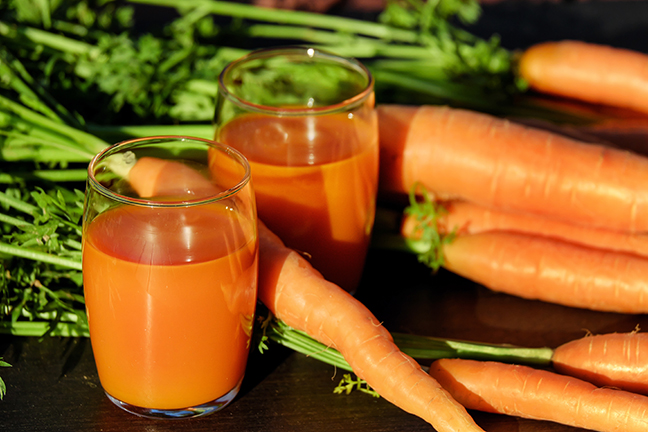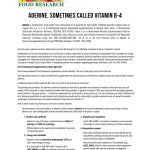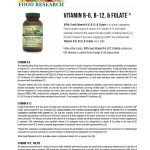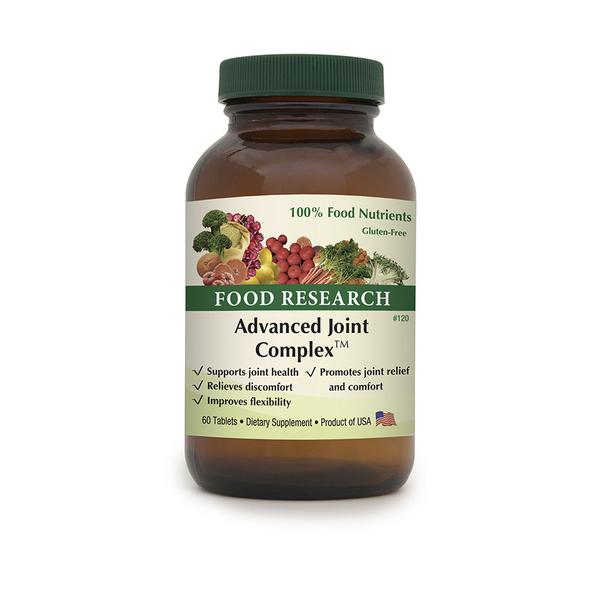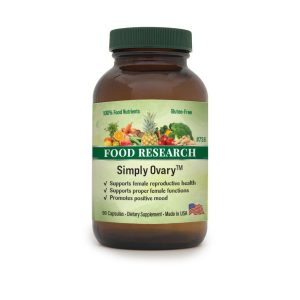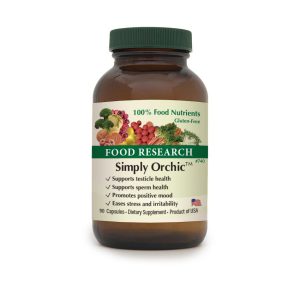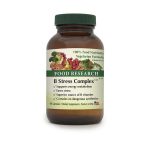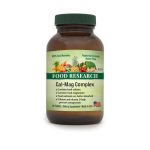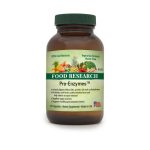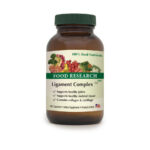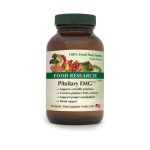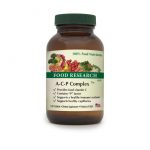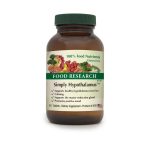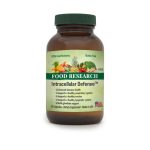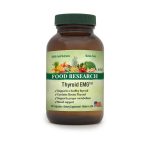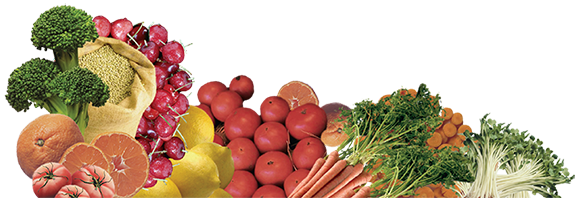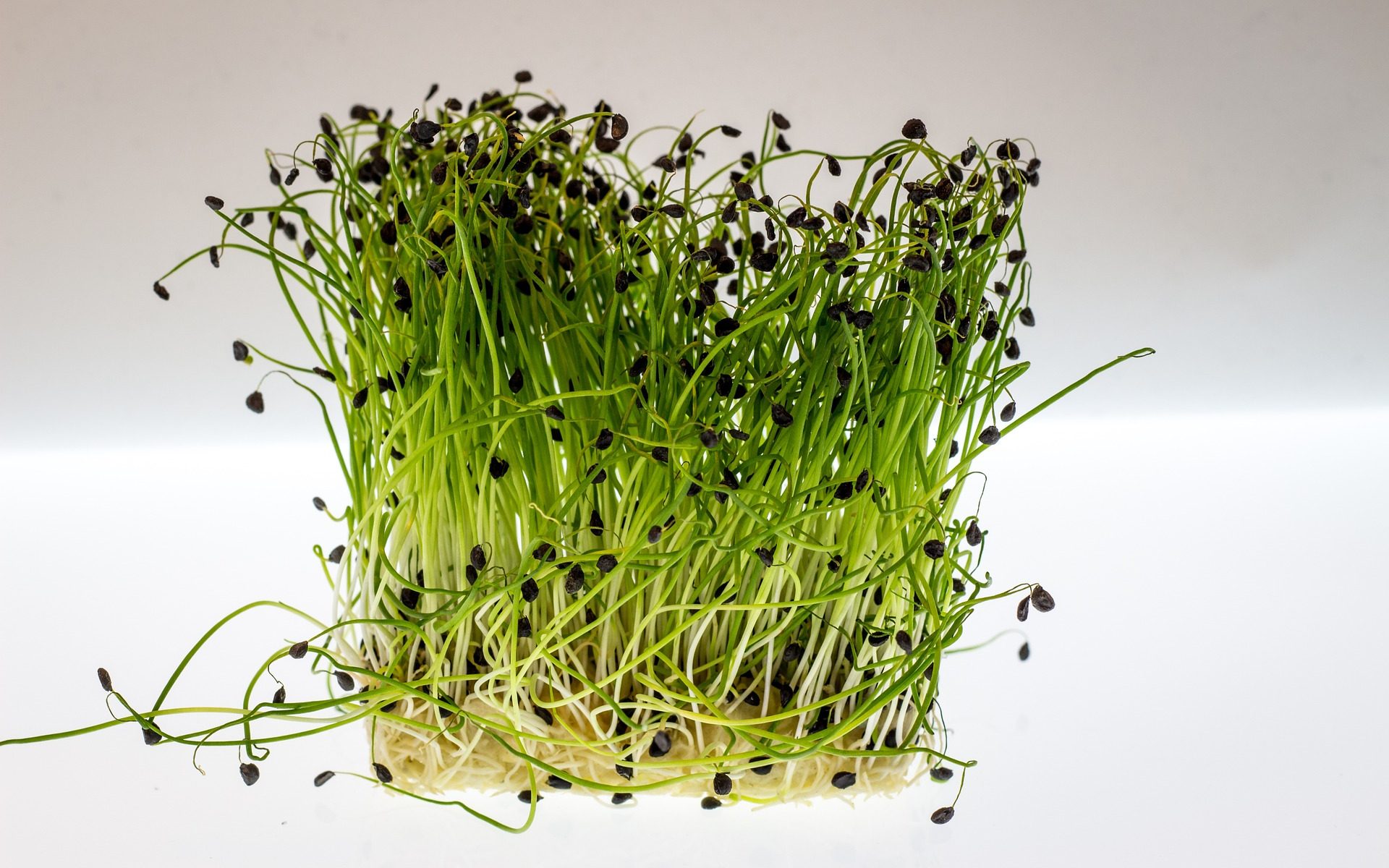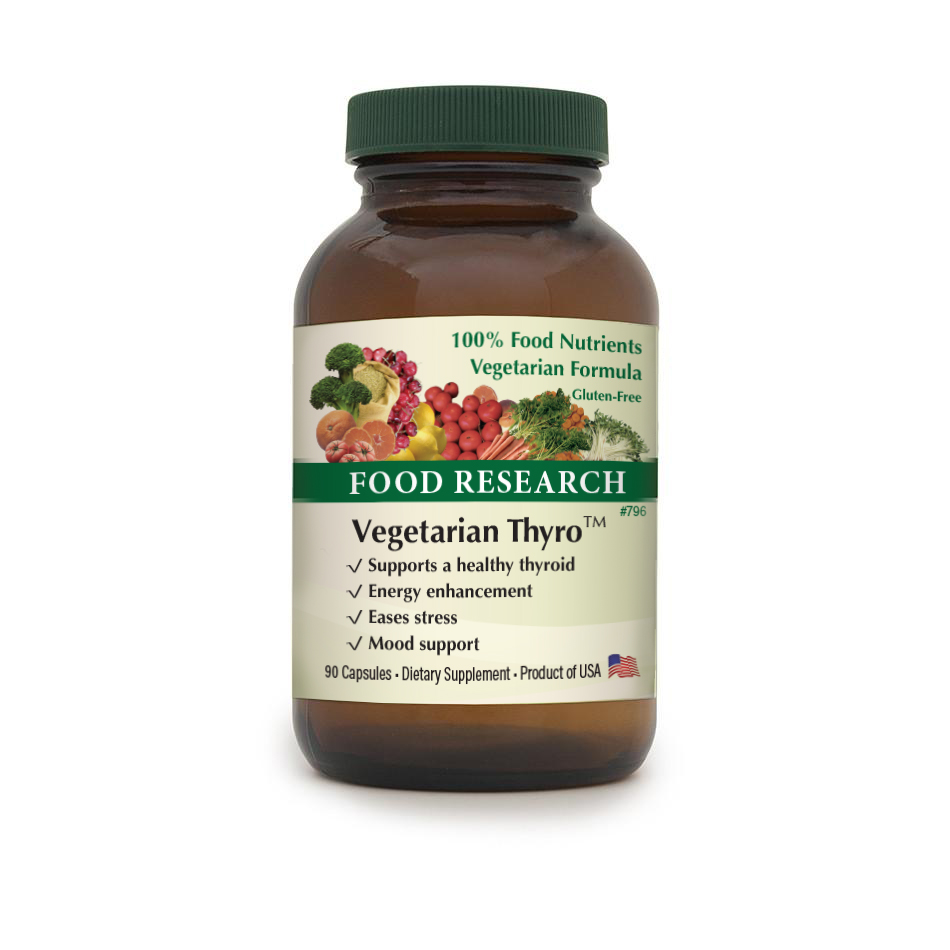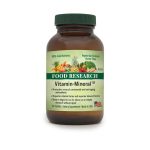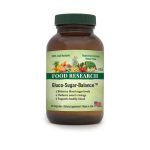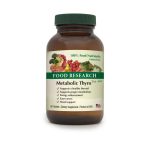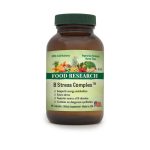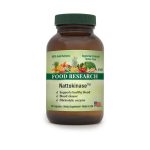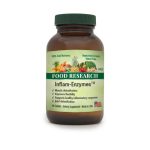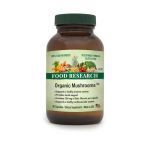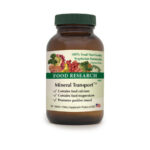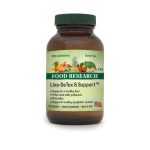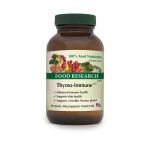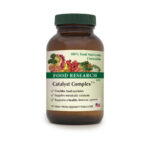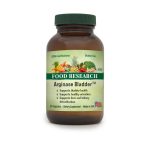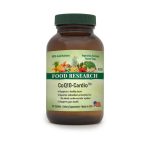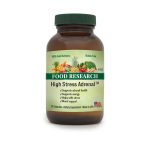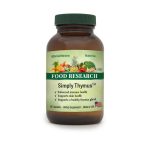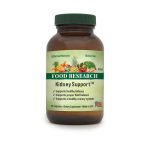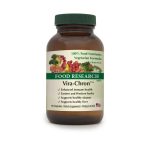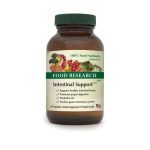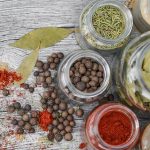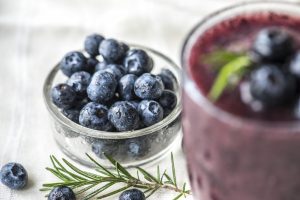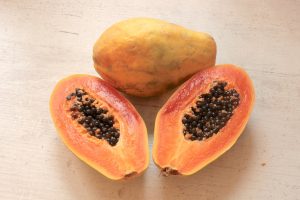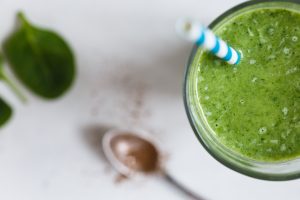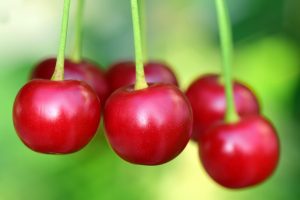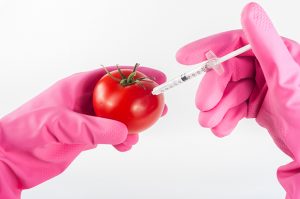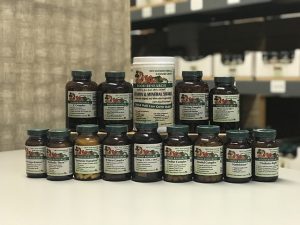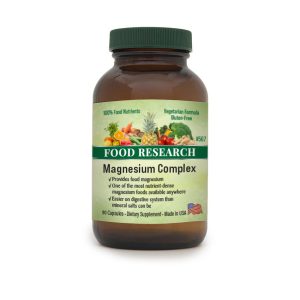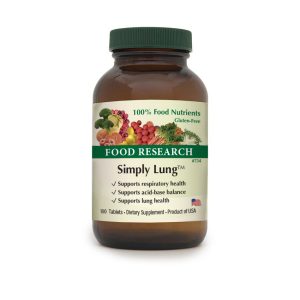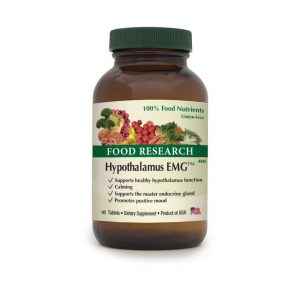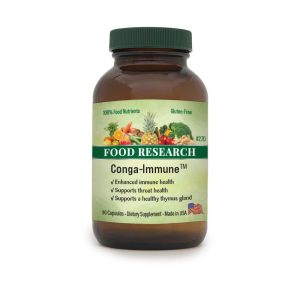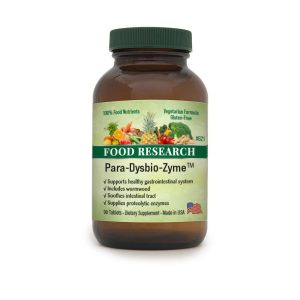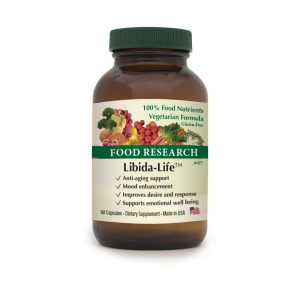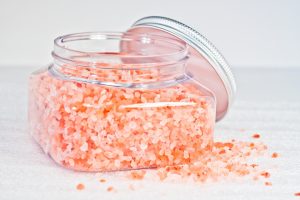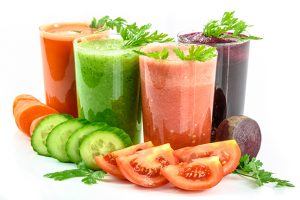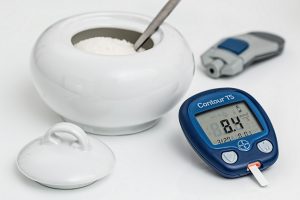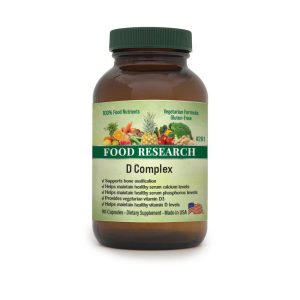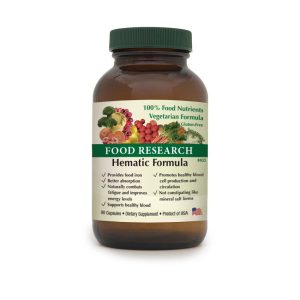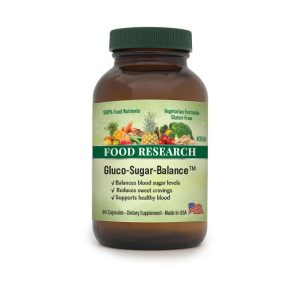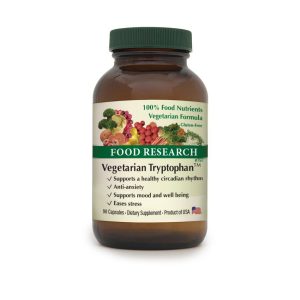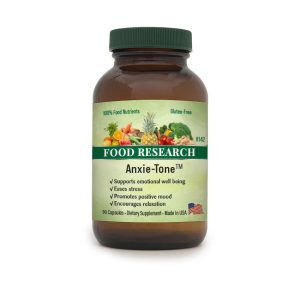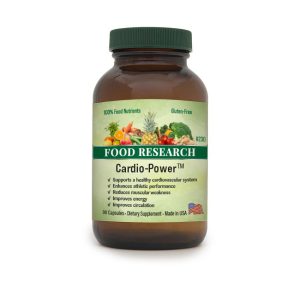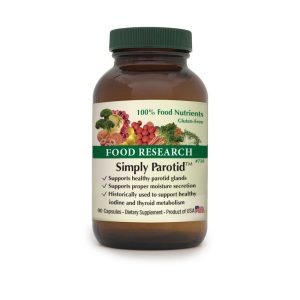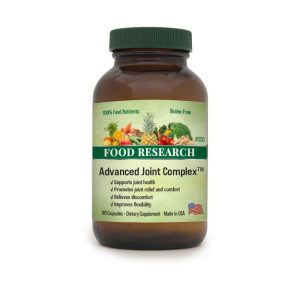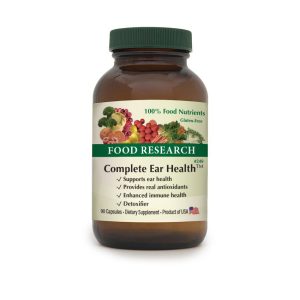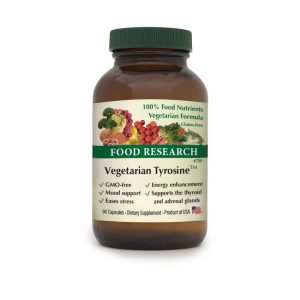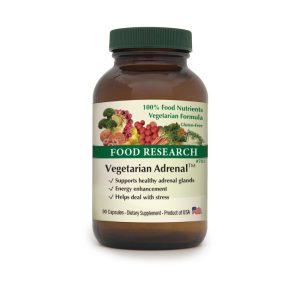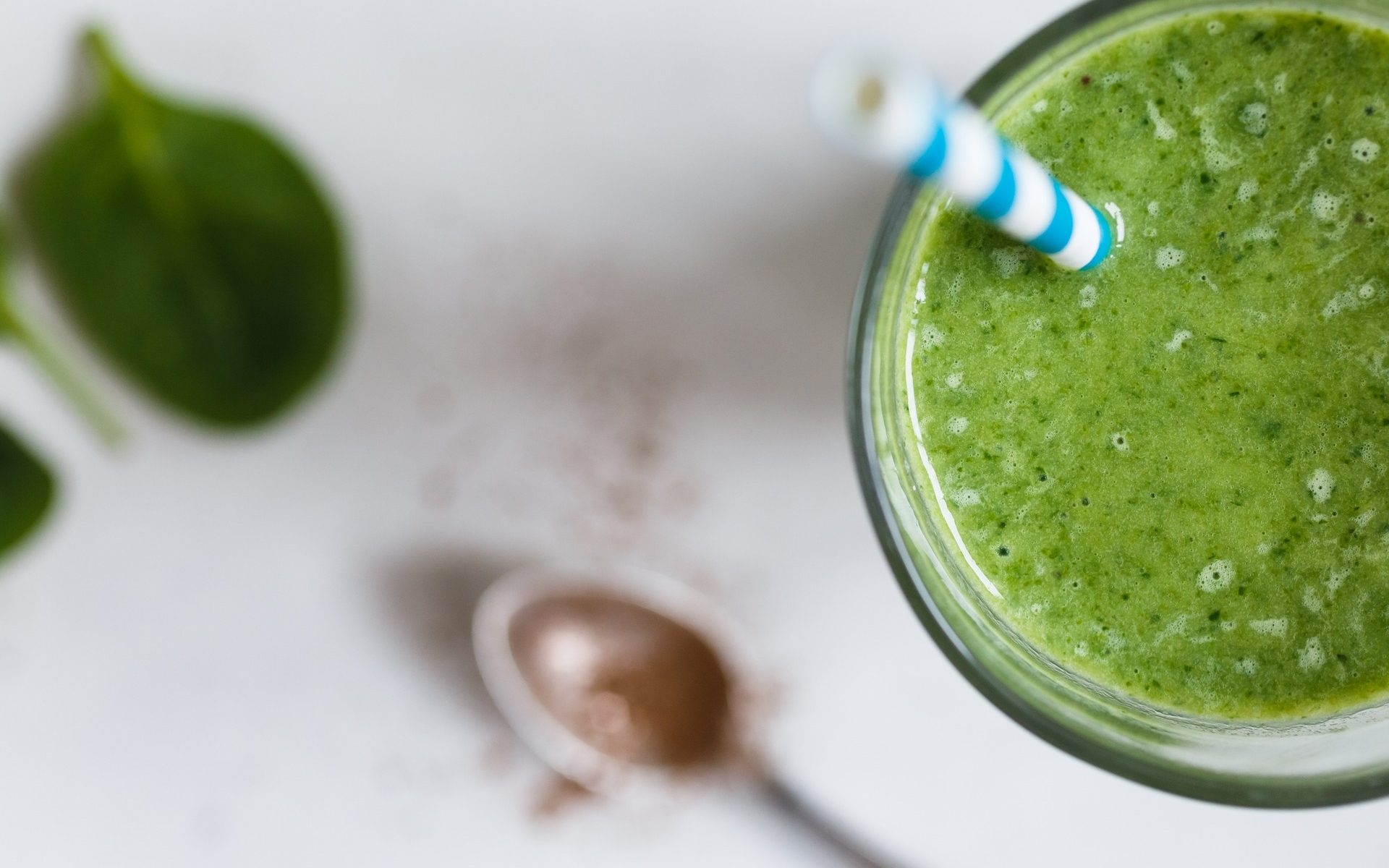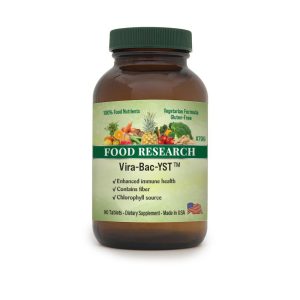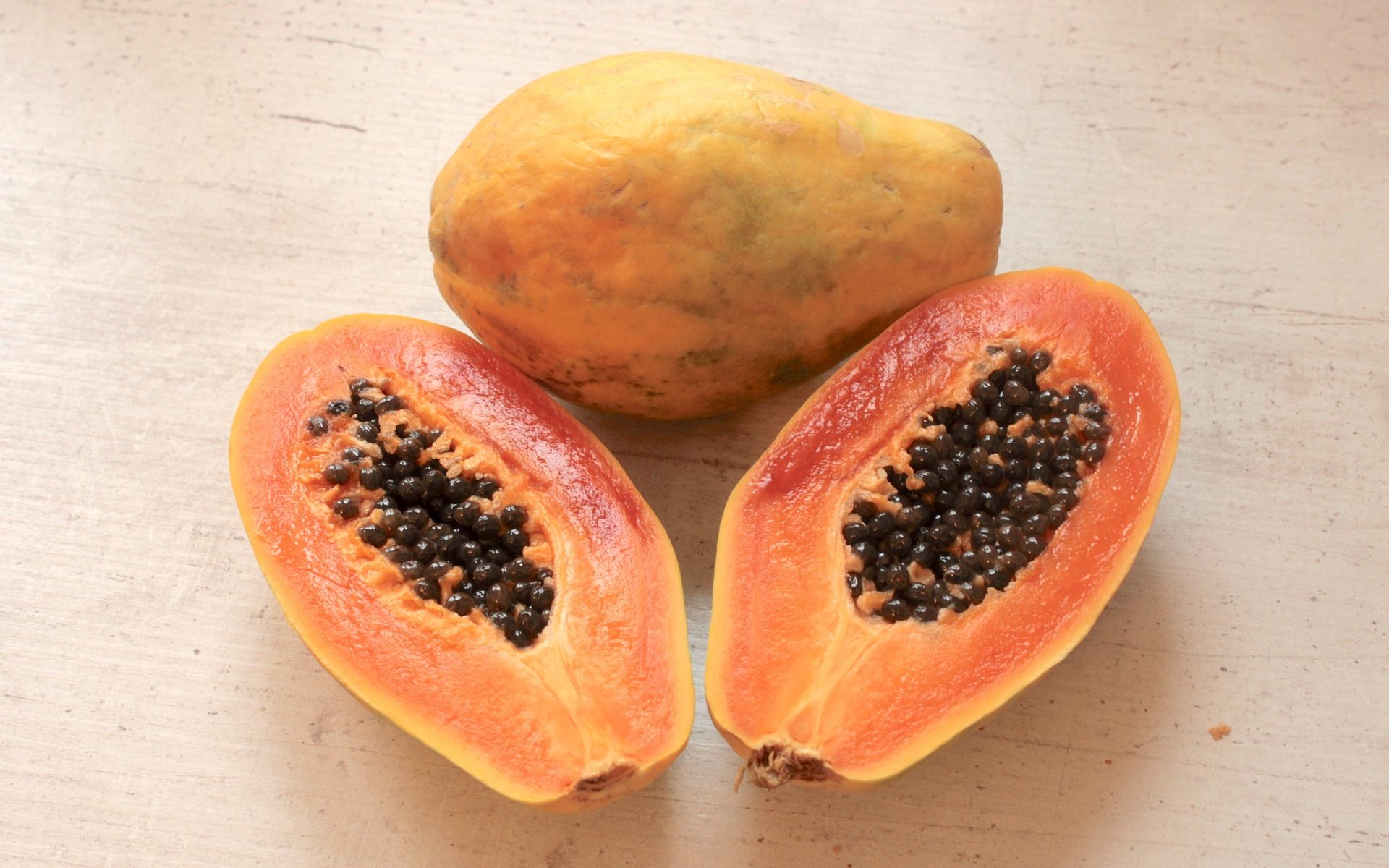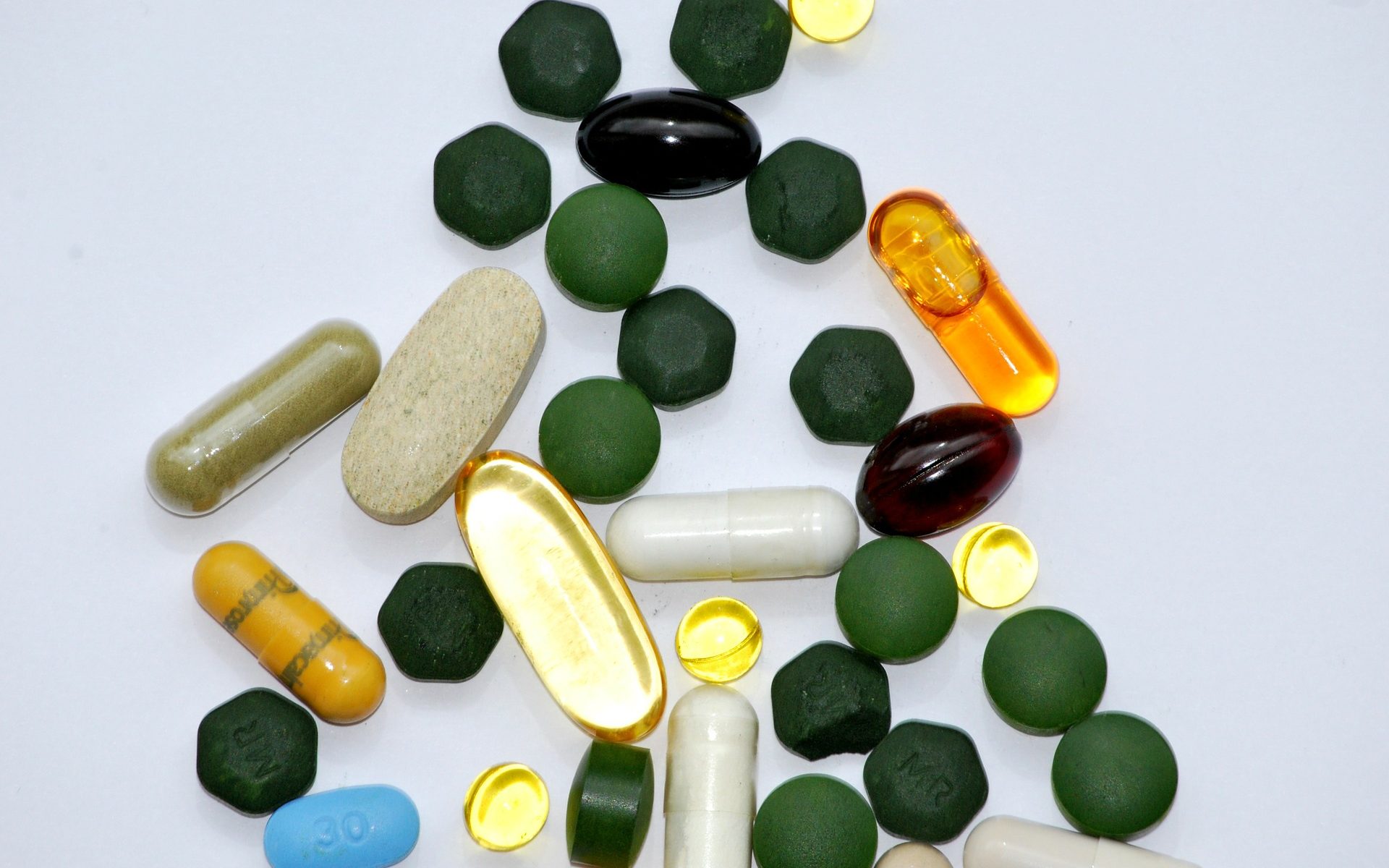Abstract: Even though natural health professionals agree that humans should not try to consume petroleum derivatives or hydrogenated sugars, most seem to overlook this fact when vitamin supplementation is involved. This paper explains some of the biochemical reasons that food vitamins are superior for humans. It also explains what substances are commonly used to make vitamins in supplements. Furthermore, it explains some of the advantages of food vitamins over the non-food vitamins that are commonly available.
Introduction
For decades the ‘natural’ health industry has been touting thousands of vitamin supplements. The truth is that most vitamins in supplements are made or processed with petroleum derivatives or hydrogenated sugars [1-5]. Even though they are often called natural, most non-food vitamins are isolated substances which are crystalline in structure [1]. Vitamins naturally in food are not crystalline and never isolated. Vitamins found in any real food are chemically and structurally different from those commonly found in ‘natural vitamin’ formulas. Since they are different, naturopaths should consider non-food vitamins as vitamin analogues (imitations) and not actually vitamins.
The standards of naturopathy agreed to in 1947 (at the Golden Jubilee Congress) included the statements, “Naturopathy does not make use of synthetic or inorganic vitamins…Naturopathy makes use of the healing properties of…natural foods, organic vitamins” [5]. Even back in the 1940s, professionals interested in natural health recognized the value of food, over non-food, vitamins. Also, it should be mentioned that naturopathic definition of organic back then was similar to the official US government definition today–why does this need to be stated? Because one pseudo-naturopath once told this researcher that a particular brand of synthetic vitamins contained “organic vitamins”, because a sales representative had told him so. Sadly, that sales representative either intentionally gave out false information or gave out misleading information–misleading because by its ‘scientific’ definition, the term ‘organic’ can mean that it is a carbon containing substance, hence by that definition all petroleum derivatives (hydro-carbons) are organic. But false, because those type of vitamins are not organic from the true naturopathic, or even the U.S. government’s, perspective.
Officially, according to mainstream science, “Vitamins are organic substances that are essential in small amounts for the health, growth, reproduction, and maintenance of one or more animal species, which must be included in the diet since they cannot be synthesized at all or in sufficient quantity in the body. Each vitamin performs a specific function; hence one cannot replace another. Vitamins originate primarily in plant tissues” [6]. Isolated non-food ‘vitamins’ (often called ‘natural’ or USP or pharmaceutical grade) are not naturally “included in the diet”, do not necessarily “originate primarily in plant tissues”, and cannot fully replace all natural vitamin activities. As a natural health professional, you should be able to read and interpret, even misleading supplement labels. For those who are unsure, hopefully this article will provide sufficient information to determine if vitamin tablets are food or imitations.
What is Your Vitamin Really?
Most vitamins in supplements are petroleum extracts, coal tar derivatives, and chemically processed sugar (plus sometimes industrially processed fish oils), with other acids and industrial chemicals (such as formaldehyde) used to process them [1-5]. Synthetic vitamins were originally developed because they cost less [7]. Assuming the non-food product does not contain fish oils, most synthetic, petroleum-derived, supplements will call their products ‘vegetarian’, not because they are from plants, but because they are not from animals. Most vitamins in vitamin supplements made from food are in foods such as acerola cherries, broccoli, cabbage, carrots, lemons, limes, nutritional yeast, oranges, and rice bran (some companies also use animal products).
Table 1. Composition of Food and Non-Food Vitamins [1-10]
| Vitamin | Food Nutrient* | ‘Natural’ Vitamin Analogue & Some Process Chemicals |
| Vitamin A/Betacarotene | Carrots | Methanol, benzene, petroleum esters; acetylene; refined oils |
| Vitamin B-1 | Nutritional yeast, rice bran |
Coal tar derivatives, hydrochloric acid; acetonitrole with ammonia |
| Vitamin B-2 | Nutritional yeast, rice bran | Synthetically produced with 2N acetic acid |
| Vitamin B-3 | Nutritional yeast, rice bran | Coal tar derivatives, 3-cyanopyridine; ammonia and acid |
| Vitamin B-5 | Nutritional yeast, rice bran | Condensing isobutyraldehyde with formaldehyde |
| Vitamin B-6 | Nutritional yeast, rice bran | Petroleum ester & hydrochloric acid with formaldehyde |
| Vitamin B-8 | Rice |
Phytin hydrolyzed with calcium hydroxide and sulfuric acid |
| Vitamin B-9 | Broccoli, rice bran | Processed with petroleum derivatives and acids; acetylene |
| Vitamin B-12 | Nutritional yeast | Cobalamins reacted with cyanide |
| Vitamin ‘B-x’ | PABA Nutritional yeast | Coal tar oxidized with nitric acid (from ammonia) |
| Choline | Nutritional yeast, rice bran | Ethylene and ammonia with HCL or tartaric acid |
| Vitamin C | Acerola cherries, citrus fruits | Hydrogenated sugar processed with acetone |
| Vitamin D | Nutritional yeast | Irradiated animal fat/cattle brains or solvently extracted |
| Vitamin E | Rice, vegetable oils | Trimethylhydroquinone with isophytol; refined oils |
| Vitamin H | Nutritional yeast, rice bran | Biosynthetically produced |
| Vitamin K | Cabbage | Coal tar derivative; produced with p-allelic-nickel |
* Note: Although some companies use liver extracts as a source for vitamins A and/or D, and at least one company has a herring oil product supplying some vitamin E, no company this researcher is aware of whose products are made out of 100% food use animal products in any of their multiple vitamins. Some companies also use brewer’s yeast which is inferior to nutritional yeast in many ways (including the fact that it has not had the cell wall enzymatically processed to reduce possible sensitivities).
Read The Label to See the Chemical Differences!
Although many doctors have been taught that food and non-food vitamins have the same chemical composition, this is simply untrue for most vitamins. As shown in table 2, the chemical forms of food and synthetic nutrients are normally different. Health professionals need to understand that since there is no mandated definition of the term ‘natural’; just seeing that term on a label does not mean that the supplement contains only natural food substances. One of the best ways to tell whether or not a vitamin supplement contains natural vitamins as found in food is to know the chemical differences between food and non-food vitamins (sometimes called USP vitamins). Because they are not normally in the same chemical form as vitamins found in foods, non-food vitamins should be considered by natural health professionals as vitamin analogues (artificial imitations), and not actually as true vitamins for humans.
Table 2. Chemical Form of Food and Non-Food Vitamins [1-10]
| Primary Chemical Vitamin Form in Food | Vitamin Analogue Chemical Form (Often Called Natural*) |
| Vitamin A/Betacarotene; retinyl esters; mixed carotenoids | Vitamin A acetate; vitamin A palmitate; betacarotene (isolated) |
| Vitamin B-1; thiamin pyrophosphate (food) | Thiamin mononitrate; thiamin hydrochloride; thiamin HCL |
| Vitamin B-2; riboflavin, multiple forms (food) | Riboflavin (isolated); USP vitamin B2 |
| Vitamin B-3; niacinamide (food) | Niacin (isolated); niacinamide (isolated) |
| Vitamin B-5; pantothenate (food) | Pantothenic acid; calcium pantothenate; panthenol |
| Vitamin B-6; 5’0 (beta-D) pyridoxine | Pyridoxine hydrochloride; pyridoxine HCL |
| Vitamin B-9; folate | Folic acid |
| Vitamin B-12; methylcobalamin; deoxyadenosylcobalamin | Cyanocobalamin; hydroxycobalamin |
| Choline (food); phosphatidyl choline (food) | Choline chloride; choline bitartrate |
| Vitamin C; ascorbate (food); dehydroascorbate |
Ascorbic acid; most mineral ascorbates (i.e. sodium ascorbate) |
| Vitamin D; mixed forms, primarily D3 (food) | Vitamin D1 (isolated); Vitamin D2 (isolated); Vitamin D3 (isolated) ; Vitamin D4; ergosterol (isolated); cholecalciferol (isolated); lumisterol |
| Vitamin E; RRR-alpha-tocopherol (food) |
Vitamin E acetate; Mixed tocopherols; all-rac-alpha-tocopherol; d-l–alpha-tocopherol; d-alpha-tocopherol (isolated); dl-alpha-tocopheryl acetate; all acetate forms |
| Vitamin H; biotin | All non-yeast or non-rice vegetarian biotin forms |
| Vitamin K; phylloquinone (food) |
Vitamin K3; menadione; phytonadione; naphthoquinone; dihydro-vitamin K1 |
* Note: This list is not complete and new analogues are being developed all the time. Also the term “(isolated)” means that if the word “food” is not near the name of the substance, it is probably an isolate (normally crystalline in structure) and is not the same as the true vitamin found in food.
Read the label of any supplement to see if the product is truly 100% food. If even one USP vitamin analogue is listed, then the entire product is probably not food (normally it will be less than 5% food). Vitamin analogues are cheap (or not so cheap) imitations of vitamins found in foods.
Beware of any supplement label that says that its vitamins are vegetarian and contain no yeast. This researcher is unaware of any frequently used vegetarian non-yeast way to produce vitamin D or many of the B vitamins, therefore, if a label states that the product “contains no yeast” then in pretty much all cases, this demonstrates that the product is synthetic or contains items so isolated that they should not be considered to be food.
Saccharomyces cerevisiae (the primary yeast used in baking and brewing) is beneficial to humans and can help combat various infections [11], including according to the German E monograph Candida albicans. In the text, Medical Mycology John Rippon (Ph.D., Mycology, University of Chicago) wrote, “There are over 500 known species of yeast, all distinctly different. And although the so-called bad yeasts do exist, the controversy in the natural foods industry regarding yeast related to health problems which is causing many health-conscious people to eliminate all yeast products from their diet is ridiculous. It should also be noted, that W. Crook, M.D., perhaps the nation’s best known expert on Candida albicans, wrote, “yeasty foods don’t encourage candida growth…Eating a yeast-containing food does not make candida organisms multiply” [12]. Some people, however, are allergic to the cell-wall of yeast [12] and concerned supplement companies which have nutrient-containing yeast normally have had the cell-wall enzymatically processed to reduce even this unlikely occurrence.
Food Vitamins are Superior to Non-Food Vitamins
Although many mainstream health professionals believe, “The body cannot tell whether a vitamin in the bloodstream came from an organically grown cantaloupe or from a chemist’s laboratory” [13], this belief is quite misleading for several reasons. First it seems to assume that the process of getting the amount of the vitamin into the bloodstream is the same (which is frequently not the case [3-10]). Secondly, scientists understand that particle size is an important factor in nutrient absorption even though particle size is not detected by chemical assessment. Thirdly, scientists also understand that, “The food factors that influence the absorption of nutrients relate not only to the nature of the nutrients themselves, but also their interaction with each other and with the nonabsorbable components of food” [14]. Fourthly, “the physiochemical form of a nutrient is a major factor in bioavailability” (and food and non-food vitamins are not normally in the same form) [15]. Fifthly, most non-food vitamins are crystalline in structure [1].
Published scientific research has concluded, “natural vitamins are nutritionally superior to synthetic ones” [8].
Food vitamins are in the physiochemical forms which the body recognizes, generally are not crystalline in structure, contain food factors that affect bioavailability, and appear to have smaller particle sizes (see illustrations in table 3). This does not mean that non-food vitamins do not have any value (they clearly do), but it is important to understand that natural food complex vitamins have actually been shown to be better than isolated, non-food, vitamins (see table 4).
Look at Electronic Photos to See the Structural Differences
Electronic photos demonstrate that isolated USP vitamins have a crystalline appearance compared to vitamins in foods which have more of a rounded appearance (see table 3).
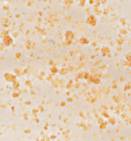 Food Vitamin C
Food Vitamin C |
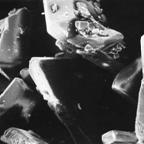 Ascorbic Acid
Ascorbic Acid |
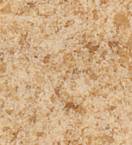 Food Vitamin B1
Food Vitamin B1 |
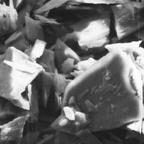 Thiamine Hydrochloride
Thiamine Hydrochloride |
Electronic Photographs
Even before these types of pictures were available, the late Dr. Royal Lee knew that food vitamin C was superior to ascorbic acid. “Dr. Lee felt it was not honest to use the name ‘vitamin C’ for ascorbic acid. That term ‘should be reserved for the vitamin C COMPLEX’” [16]. Why then, according to the ingredients listed in a recent catalog, would a supplement company that Dr. Lee originally founded currently include ascorbic acid, inorganic mineral salts, and/or other isolated nutrients in the majority of its products? Dr. Lee, like the late Dr. Bernard Jensen [17], was also opposed to the use of other isolated, synthetic, nutrients [16].
Dr Lee specifically wrote, “In fact, the Food & Drug laws seem to be suspended where synthetic imitations of good foods are concerned, and actually perverted to prosecute makers and sellers of real products…The synthetic product is always a simple chemical substance, while the natural is a complex mixture of related and similar materials…Pure natural Vitamin E was found three times as potent as pure synthetic Vitamin E. Of course the poisonous nature of the synthetic Vitamin D…is well established. WHY DO NOT THE PEOPLE AND MEDICAL MEN KNOW THESE FACTS? Is it because the commercial promoters of cheap imitation food and drug products spend enough money to stop the leaking out of information?” [18].
Table 4. Comparison of Certain Biological Effects of Food and Non-Food Vitamins
| Food Vitamin | Compared to USP/’Natural’/Non-Food Vitamins |
| Vitamin A | More complete, as scientists teach that vitamin A is not an isolate [19] |
| Vitamin B | Complex More effective in maintaining good health and liver function [20,21] |
| Vitamin B-9 | More utilizable above 266mcg (Recommended Daily Intake is 400mcg) [22] |
| Vitamin C | Over 15.6 times antioxidant effect [23] |
| Vitamin D | Over 10 times the antirachitic effect [24] |
| Vitamin E | Up to 4.0 times the free radical scavenging strength [25] |
| Vitamin H | Up to 100 times more biotin effect [1] |
| Vitamin K | Safer for children [26] |
The difference is more than quantitative.
Let’s take vitamin C for an example. Even if one were to take 3.2 times as much of the so-called natural, non-food, ascorbic acid than food vitamin C, although the antioxidant effects might be similar in vitro, the ascorbic acid still will not contain DHAA [1], nor will it ever have negative oxidative reductive potential (ORP). An in vitro study performed at this researcher’s lab with a digital ORP meter demonstrated that a citrus food vitamin C has negative ORP, but that ascorbic acid had positive ORP [27].
It takes negative ORP to clean up oxidative damage [28], and since ascorbic acid has positive ORP (as well as positive redox potential [1]), it can never replace food vitamin C no matter what the quantity! Furthermore, foods which are high in vitamin C tend to have high Oxygen Radical Absorbance Capacity (ORAC, another test which measures the ability of foods and other compounds to subdue oxygen free radicals [23]). A US government study which compared the in vivo effects of a high vitamin C food (containing 80 mg of vitamin C) compared to about 15.6 times as much isolated ascorbic acid (1250 mg) found that the vitamin C-containing food produced the greatest increase in blood antioxidant levels (it is believed that bioflavonoids and other food factors are responsible) [23].
Furthermore, it is even possible isolated ascorbic acid only has in vitro and no in vivoantioxidant effects: “it has not been possible to show conclusively that higher than anti-scorbic intake of {SYNTHETIC} vitamin C has antioxidant clinical benefit” [29]. Why should people take supplemental synthetic ascorbic acid when it is NOT been proven to have antioxidant effects in humans?
“Cross sectional and longitudinal studies show that the occurrence of cardiovascular disease and cancer is inversely related to vitamin C intake…the protective effects seen in these studies are attributable to fruit and vegetable {FOOD} intake…In general, beneficial effects of supplemental {SYNTHETIC} vitamin C have been noted in small studies, while large well controlled studies have failed to show benefit” [29]. The other quantitative is that in humans, “Plasma is completely saturated in doses of 400 mg and higher daily producing a steady-state plasma concentration of 80 mM…Tissues, however, saturate before plasma” [29]. De-emphasizing vitamin C containing foods by attempting to consume higher quantities of isolated ascorbic acid simply will not have the effects on plasma vitamin C levels, ORP, ORAC, or other health aspects that many consumers of isolated ascorbic acid hope it will [3,27,29].
No matter how much isolated ascorbic acid one takes orally
- It will never saturate plasma and/or tissue vitamin C levels significantly more than can be obtained by consuming sufficient vitamin C containing foods.
- It will never have negative ORP, thus can never ‘clean-up’ oxidative damage like food vitamin C can.
- It will never have the free radical fighting capacity of food vitamin C.
- It will never contain DHAA (the other ‘half’ of vitamin C) or the promoting food factors.
- It will never have the same effect on health issues, such as aging and cardiovascular disease as high vitamin C foods can.
- It will not ever be utilized the way food vitamin C is.
- It will always be a synthetic.
Let’s take vitamin E as another example—the body has a specific liver transport for the type of vitamin E found in food [10]—it does not have this for the synthetic vitamin E forms (nor for the ‘new’ vitamin E analogues that are frequently marketed)—thus no amount of synthetic vitamin E can truly equal food vitamin E—the human body actually tries to rid itself of synthetic vitamin E as quickly as possible [30]. As another example, it should be understood that certain forms of vitamin analogues of B-6 [19], D [10], and biotin [1] have been shown to have almost no vitamin activity.
Fractionated, synthetic, vitamins do not replace all the natural function of food vitamins in the body. This is due to the fact that they are normally chemically and structurally different (they also do not have the naturally occurring food factors which are needed by the body) from vitamins found in foods (or vitamin supplements made up entirely of foods).
Food Vitamins and Non-Food Vitamin Analogues
Vitamin A/Betacarotene: Vitamin A naturally exists in foods, but not as a single compound. Vitamin A primarily exists in the form of retinyl esters, and not retinol and beta carotene is always in the presence of mixed carotenoids with chlorophyll [10]. Vitamin A acetate is from methanol, it is a retinol which is crystalline in structure [1]. Vitamin A palmitate can be fish oil [1] or synthetically derived [2]; but once isolated it bears little resemblance to food and can be crystalline in structure [1,2]. Synthetic betacarotene is “prepared from condensing aldehyde (from acetone) with acetylene” [2]; “not much natural beta-carotene is available due to the high costs of production” [2].
“Beta-carotene has been found to have antioxidant effect in vitro…Whether {ISOLATED} beta-carotene has significant antioxidant effect in vivo is unclear” [32]. Carrots, a food high in betacarotene, do have high antioxidant ability [32,33]. Natural betacarotene, as found in foods, is composed of both all-trans and 9-cis isomers, while synthetic betacarotene is all-trans isomers [34]. Carrots, yellow and green leafy vegetables, and turmeric contain natural betacarotene along with multiple carotenoids. Natural betacarotene was found to significantly decrease serum conjugated diene levels for children exposed to high levels of irradiation, though it is not known if synthetic betacarotene would provide similar benefits [34].
Regarding isolated betacarotene, “The data presented provide convincing evidence of the harmful properties of this compound if given alone to smokers, or to individuals exposed to environmental carcinogens, as a micronutrient supplement” [35]. “The three beta-carotene intervention trials: the Beta Carotene and Retinol Efficacy Trial (CARET), Alpha-Tocopherol, Beta-Carotene Cancer Prevention Study (ATBC), and Physician’s Health Study (PHS) have all pointed to a lack of effect of synthetic beta-carotene in decreasing cardiovascular disease or cancer risk in well-nourished populations. The potential contribution of beta-carotene supplementation to increased risk of lung cancer in smokers has been raised as a significant concern. The safety of synthetic beta-carotene supplements and the role of isomeric forms of beta-carotene (synthetic all-trans versus “natural” cis-trans isomeric mixtures)… have become topics of debate in the scientific and medical communities” [36]. Now, although the consumption of both synthetic betacarotene and food betacarotene raise serum vitamin A levels about the same, this obscures the fact that synthetic betacarotene tends to mainly increase serums all-trans betacarotene, while food betacarotene increases other forms as well [37].
It is possible that synthetic betacarotene can negatively affect vitamin E’s antioxidant ability as a clinical study found, “These results support earlier findings for the protective effect of a-tocopherol against LDL oxidation, and suggest that beta-carotene participates as a prooxidant in the oxidative degradation of LDL under these conditions. Since high levels of alpha-tocopherol did not mitigate the prooxidative effect of beta-carotene, these result indicate that increased LDL beta-carotene may cancel the protective qualities of alpha-tocopherol” [38]. In a consumer-directed publication, Stephen Sinatra (M.D.) observes, “Research has shown that high doses of synthetic beta-carotene—the kind found in many popular brands—may actually increase your risk for lung cancer. Because at high levels it can become prooxidative—exactly the opposite of what you want…I’ve seen harmful effects (such as serious vision loss) in people who have taken up to 80,000 IU of beta-carotene per day. The bottom line is: Less is more when it comes to beta-carotene. To be safe I recommend between 12,500 and 25,000 IU of beta-carotene per day from food sources such as carrots” [39].
In my opinion, betacarotene in carrots, however, is safer than even Dr. Sinatra suggests (there is about 12,000 i.u. of betacarotene in one raw carrot). The reason for this is because betacarotene in carrots is attached to lipoproteins which appear to aid in preventing toxicity. Isolated USP betacarotene, even if it allegedly comes from “natural” sources, simply does not have the attached lipoproteins or other potentially protective substances as found in foods like carrots.
While isolated synthesized vitamin A and polar bear livers have posed toxicity issues, this is simply not considered to be the case of any other food that is supplying vitamin A/beta-carotene [40,41]. Foods containing vitamin A and/or beta carotene are superior [8].
Vitamin B-1, Thiamin: Vitamin B-1 exists in food in the forms of thiamin pyrophosphate, thiamin monophosphate, and thiamin [10]. The non-food thiamin mononitrate is a coal tar derivative [4], never naturally found in the body [10], and is a crystalline isolate [1] (the same is true for thiamin hydrochloride and other chloride forms). Synthetic forms are often used in “food fortification” (where processing removes the naturally occurring thiamin) as they are cheaper and, in that context more stable. However, they are inferior to naturally occurring thiamin forms [8,42]. “The nutritive value of straight-run white flour…has been found to be inferior to that of wholemeal flour, even when the defects of the former in protein, minerals and {SYNTHETIC} vitamin B1 have been corrected” [42].
Vitamin B-2, Riboflavin: Naturally exists as riboflavin and various co-enzyme forms in food [10]. In non-foods it is most often synthetically made with 2N acetic acid, is a single form isolate, and is crystalline in structure [1]. Some synthetic riboflavin analogues have weak vitaminic activity [43]. Some natural variations, especially in coenzyme forms, occur in plants (including fungal) species [44]. Various studies suggests that food riboflavin are superior to non-food forms [8,41].
Vitamin ‘B-3’, Niacinamide: Primarily exists in foods in forms other than niacin [10]. “Niacin is a generic term…the two coenzymes that are the metabolically active forms of niacin (are)…nicotinamide adenine dinucleotide (NAD) and NAD phosphate (NADP)…Only small amounts of free forms of niacin occur in nature. Most of the niacin in food is present as a component of NAD and NADP…nicotinamide is more soluble in water, alcohol, and ether than nicotinic acid…many analogues of niacin have been synthesized, some of which have antivitamin activity ” [10]. Niacinamide (also called nicotinamide) is considered to have less potential side-effects than niacin [10]; it also does not seem to cause gastrointestinal upset or hepatotoxicity that the synthetic time-released niacin can cause [45]. Processing losses for this vitamin are mainly due to water leaching [46]. Isolated, non-food, niacinamide is normally from 3-cyanopyridine and can form crystals [1]. This non-food ‘niacin’ is synthesized from acetaldehyde through several chemical reactions often involving formalydehyde and ammonia [2,47]. Beef, legumes, cereal grains, yeast, and fish are significant natural food sources of vitamin B3 [45].
Vitamin ‘B-5’, Pantothenate: Naturally exists in foods as pantothenate [10]. “Pantothenate, usually in the form of CoA, performs multiple roles in cellular metabolism, being central to energy-yielding oxidation of glycolytic products and other metabolites through the mitochondrial tricarboxylic acid cycle…Synthesis of fatty-acids and membrane phospholipids, including regulatory sphingolipids requires pantothenate, and synthesis of the amino acids leucine, arginine, and methionine requires a pantothenate requiring step. CoA is required for synthesis of isoprenoid derivatives, such as cholesterol, steroid hormones, dolichol, vitamin A, vitamin D, and heme A” [10]. “It also appears to be involved in the regulation of gene expression and signal transduction…may have antioxidant and radioprotective properties…It has putative anti-inflammatory, wound healing and antiviral activities…may be helpful in the management of some with rheumatoid arthritis…shown to accelerate wound healing” [32]. “Synthetic D-pantothenate…is available as a calcium or sodium salt” [10], and is sold in forms such as sodium D-pantothenate or calcium D-pantothenate or sometime just listed as pantothenic acid [32]. Other synthetic “multivitamin preparations commonly contain its…alcohol derivative, panthenol” [10]. “Dexopanthenol is a synthetic form which is not found naturally” [32]. USP pantothenic acid is made by condensing isobutyraldehyde with formaldehyde [2]. “Pantothenic acid consists of pantoic acid in amide linkage to beta-alanine”, but vitamin B-5 is not found that way in nature [48]. Vitamin B-5 is found in food as pantothenate forms; foods do not naturally contain pantothenic acid [48]. The vegetarian foods which are highest in natural pantothenate are nutritional yeast, brown rice, peanuts, and broccoli [10,32,48]. Specifically, Saccharomyces cerevisiae is one of the best natural sources of food pantothenate [10,32]. Calcium pantothenate is a synthetic enantiomer [10] and is a calcium salt [1] and is crystalline [2].
Vitamin B-6: Plants naturally primarily contain vitamin B6 in forms such as 5’0-(beta-D-glycopyransosyl) and other pyridoxines, not pyridoxal forms [10]. Pyridoxine hydrochloride is not naturally found in the body [10], is a crystalline isolate [1], and is generally made from petroleum and hydrochloric acid and processed with formaldehyde [4]. Pyridoxal-5-phosphate is made by combining phosphorus oxychloride and/or adenosine triphosphate with pyridoxal [1]; it becomes a crystalline isolate [1] and bears almost no resemblance to food vitamin B6. At least one synthetic vitamin B-6 analogue has been found to inhibit natural vitamin B-6 action [49]. A study of healthy elderly individuals found about 1/3 had marginal vitamin B-6 deficiency [32].
Vitamin ‘B-9’, Folate: Folate was once known as vitamin B-9, as well as vitamin M. Initially food folate was given for people with a pregnancy-related anemia in the form of autolyzed yeast; later a synthetic USP isolate was developed [10]. Pteroylglutamic acid (folic acid), the common pharmacological (USP) form of folate is not found significantly as such in the body [10]. “Folic acid is a synthetic folate form” [50]. Folic acid, such as in most supplements, is not found in food, folates are [15]. Insufficient folate can result in fatigue, depression, confusion, anemia, reduced immune function, loss of intestinal villi, and an increase in infections [11]. Folate deficiency is the most important determinant in high homocysteine levels [11], and supplemental folate is effective in reducing homocysteine [51,52]. “The highest concentrations of folate exist in yeast…and brocolli” [10]. Insufficient folate can result in fatigue, depression, confusion, anemia, reduced immune function, loss of intestinal villi, and an increase in infections [11]. “(C)onsumption of more than 266 mcg of synthetic folic acid (PGA) results in absorption of unreduced PGA, which may interfere with folate metabolism for a period of years” [10]. A 2004 paper from the British Medical Journal confirmed what many natural health professional have known all along: since folic acid is unnatural and the body cannot fully convert large amounts of it into usable folate, this artificial substance can be absorbed and may have unknown negative consequences in the human body [22]–folate supplementation obviously should be in food folate forms and not folic acid.
Vitamin B-12: The naturally active forms are methylcobalamin and deoxyadenosylcobalamin and are found in food [10]. Cyanocobalamin is not a naturally active form [10]; it is an isolate which is crystalline in structure [1]. Initially natural food complexvitamin B12 was given for people with pernicious anemia in the form of raw liver, but due to cost considerations a synthetic USP isolate was developed [7]. According to Dr. Victor Herbert (and others) vitamin B-12 when ingested in its human-active form is non-toxic, yet Dr. Herbert (and others) have warned that “the efficacy and safety of the vitamin B12 analogues created by nutrient-nutrient interaction in vitamin-mineral supplements is unknown” [52]. Some synthetic vitamin B12 analogues seem to be antagonistic to vitamin B12 activity in the body [53,54]. Most synthetic B-12 is made through a fermentation process with the addition of cyanide [4].
Vitamin B-x, Vitamin B-8, Vitamin B factors like Choline: PABA was once called vitamin B-x, while inositol was once called vitamin B-8. They and choline are considered to be vitamin B co-factors.
In large doses, PABA is “indicated for Peyronie’s disease, scleroderma, morphea and linear scleroderma” [11]. The non-food version of PABA is made from coal tar [2]. In addition, there is a non-food potassium salt synthetic form, called aminobenzoate potassium [11]. PABA is found in foods such as kidney, liver, molasses, fungal foods, spinach, and whole grains [55].
The non-food version of inositol is made from phytin processed with sulfuric acid [2]. Inositol is a lipotrophic factor, as is also necessary for hair growth. While nutritional yeast is probably the best source of inositol, it is also found in fruits, lecithin, legumes, meats, milk, unrefined molasses, raisins, vegetables, and whole grains [55].
Choline bitartrate and choline chloride, the types most often encountered in allegedly “natural” vitamin supplements, are actually “commercial salts” [11]—they are synthetic forms. Ethylene is involved in the production of one or more of the synthetic forms [2].
Phosphatidyl-choline is the major delivery form of choline, and is naturally found in many foods such as beef liver, egg yolks, and soya [11]. Specially grown nutritional yeast appears to be the best food form for supplements.
Vitamin C: Vitamin C naturally occurs in fruits in two ascorbate forms with bioflavonoids [10]. Non-food, so-called ‘natural’ ascorbic acid is made by fermenting corn sugar into sorbitol, then hydrogenating it until it turns into sorbose, then acetone (commonly referred to as nail polish remover) is added to break the molecular bonds which creates isolated, crystalline, ascorbic acid. It does not contain both vitamin C forms (nor bioflavonoids), thus is too incomplete to properly be called vitamin C [2]. The patented ‘vitamin C’ compounds that are touted as less acidic than ascorbic acid also are not food (it is not possible to get a US patent on naturally occurring vitamins as found in food–anytime a health professional hears that some vitamin is patented, that should set off warning signals that it is not real food). An in vitro study found that food complex vitamin C has negative ORP (oxidative reductive potential) [27], yet the Merck Index shows that so-called ‘natural’ ascorbic acid has positive ORP [1] (negative ORP is much better as it helps ‘clean up’ oxidative damage whereas items with positive ORP do not) [56]. Food complex vitamin C is also 10x less acidic than ascorbic acid.
Some of the many functions that vitamin C is involved in include collagen formation, carnitine biosynthesis, neurotransmitter synthesis, enhancement of iron absorption, immunocompetence, antioxidant defense, possible anticarcenogenic effects, protection of folate and vitamin E from oxidation, and cholesterol catabolism [1].
One study found that food complex vitamin C had 492 micro moles per gram T.E. (Trolox equivalents) of hydrophilic ORAC (oxygen radical absorbance capacity) [57]—ORAC is essentially a measurement of the ability to quench free radicals (antioxidant ability)—while blueberries (one of the highest ORAC sources [23]) only had 195 micro moles per gram T.E. [57]—thus food complex vitamin C has 2.52 times the ORAC ability of blueberries. Vitamin C containing food has over 15.6 times the ORAC of isolated ascorbic acid [23] (food complex vitamin C is even higher). Actually, there are doubts that isolated ascorbic acid has any significant antioxidant effects in humans [29]. Food vitamin C is clearly superior for any interested in ORAC.
Although food vitamin C is superior to isolated ascorbic acid [8], at least one mainstream researcher has written, “The bioavailability of vitamin C in food and ‘natural form’ supplements is not significantly different from that of pure synthetic AA” [10] this is simply not true. As “proof” that particular author cites two papers. The first citation is a study that concludes since serum ascorbic acid levels were at similar levels after various vitamin C containing foods and synthetic ascorbic acid were consumed, that the bioavailability is similar [58]. The conclusions reached seem to ignore that fact that it may be possible that DHAA or other food constituents associated with natural vitamin C may have positive effects other than raising serum ascorbate levels. The second citation is a study that probably should not have been cited as it never compared vitamin C as complexed in food versus synthetic ascorbic acid (it compared synthetic ascorbic acid to Ester-C which is a commercial blend of synthetic ascorbic acid and select metabolites as well as to synthetic ascorbic acid mixed with some bioflavonoids) [59]. Hence, those who claim that there is no difference really do not have strong scientific proof for there contrary opinion.
More recent scientific investigations (cited previously. i.e. 8,23,27,57) have demonstrated that food vitamin C is superior to isolated ascorbic acid.
Vitamin D: The history of synthetic vitamin D is a shocking one. “The first vitamin isolated was a photoproduct from the irradiation of the fungal sterol ergosterol. This vitamin was known as D1…vitamin D obtained from irradiation of ergosterol had little antirachitic activity” [60]–in other words, the first synthetic vitamin D did not act the same as natural vitamin D. “At the time of its identification, it was assumed that the vitamin D made in the skin during exposure to sunlight was vitamin D2”, but it was later learned that human skin produced something called vitamin D3 [60]. It was first believed that provitamin D3 was directly converted to vitamin D3, but that was incorrect. The skin actually contains a substance commonly called provitamin D3; after exposure to sunlight previtamin D3 is produced and it begins to isomerize into vitamin D2 in a process which is temperature dependent, with isomerized vitamin D3 being jettisoned from the plasma membrane into extracellular space. Vitamin D2 was used to fortify milk in the US and Canada for about forty years until it was learned that D3 was the substance which had better antirachitic activity, so D3 has been used for the past twenty-five years [60]. But vitamin D has many benefits which are unrelated to rickets: B and T lymphocytes have been shown to have receptors for vitamin D similar to those found in the intestines, vitamin D seems to affect phagocytosis, and may even have some antiproliferation effect for tumor cells [60]. It has not been proven that any single USP isolated form of vitamin D has all the benefits as natural occurring forms of vitamin D. (Also, since the vitamin D was not particularly stable, manufacturers used to put in 1.5 to 2 times as much of synthetic vitamin D as they claimed on the product labels. This led to neonatal problems and hypercalcemia. [60].) One older report found that “natural vitamin D is about 100 times more potent in protecting chickens and children from rickets than…irradiated ergosterol” [61], USP vitamin D2.
New vitamin D analogues are still being developed: some which may have greater affects on calcium utilization [62], some even may be helpful for breast cancer [63]–but these really may be pharmacological, and not naturopathic, applications since these analogues are not food. In view of the historical errors in the supplementation with forms of vitamin D, it is reasonable to conclude that additional benefits of natural source vitamin D may be discovered, further distinguishing it from synthetic isolates.
Vitamin D is not an isolate, it exists as a combination of substances (including vitamin D3), with promoting metabolites [10]. Non-food vitamin analogues D1, D2, D3, and D4 are isolates without the promoting metabolites. USP D1 does not have appreciable antirachitic effects [10], is crystalline, and is made with benzene [1]. USP D2 is considered a synthetic form and is made by bombarding ergosterol with electrons [1] and is “recovered by solvent extraction” [2]. USP D3 and D4 are both made through irradiating animal fat [1,10,31] or through irradiating “the spinal cords and brains of cattle” [2]. Scientists are even developing a ‘new’ form of vitamin D (which is admitted to be an analogue) which is supposed to be helpful for osteoporosis [64]—natural vitamins cannot be invented! The fact that some drugs are chemically similar to vitamin D as found in foods, does not make them true vitamins. Food vitamin D has been reported to have at least 10 times the antirachitic effects than one or more isolated USP forms [65].
Vitamin E: Natural vitamin E “as found in foods is [d]-alpha tocopherol, whereas chemical synthesis produces a mixture of eight epimers” [66] (natural vitamin E has recently been renamed to be called RRR-alpha-tocopherol whereas the synthetic has now been renamed to all-rac-alpha-tocopherol, though supplement labels rarely make this clear; on supplement labels d-alpha-tocopherol is generally ‘natural’, whereas dl-alpha-tocopherol is synthetic [25]). Natural RRR-alpha-tocopherol has 1.7 – 4.0 times the free radical scavenging strength of the other tocopherols, RRR-alpha tocopherol has 3 times the biological activity of the alpha-tocotrienol form, and synthetic vitamin E simply does not have the same biologic activity of natural vitamin E (some synthetic forms have only 2% of the biological activity of RRR-alpha-tocopherol) [25]. The biologic activity of vitamin E is based on its ability to reverse specific vitamin E-deficiency symptoms [25], therefore it is a scientific fact that, overall, synthetic vitamin E has less ability to correct vitamin E deficiencies than food vitamin E. There is an interesting reason for this, which is that the body regulates plasma vitamin E through a specific liver alpha-tocopherol transfer protein, whereas it has no such protein for other vitamin E forms [25]. Or in other words, the liver produces a protein to handle vitamin E found in food, but not for the synthetic forms. The body retains natural vitamin E 2.7 times better than synthetic forms [30].
Even mainstream researchers teach, “Vitamin E is the exception to the paradigm that synthetic and natural vitamins are the equivalent because their molecular structures are identical…Synthetic vitamin E is produced by commercially coupling trimethylhydroquinone (TMHQ) with isophytol. This chemical reaction produces a difficult-to-separate mixture of eight isomers” [67] (vitamin E, of course, is not the only exception–all nutrients are better if they are Food). Isolated natural vitamin E has been found to have twice the bioavailability as synthetic vitamin E [68]. The form of vitamin E found in Foodhas been found to be 2.7 times better retained in the body than a synthetic form [26]—this appears to be because the body attempts to rid itself of synthetic forms as quickly as possible [26]. Food vitamin E, as found in specially grown rice, has been proven to have 12 micro moles per gram T.E. of lipophilic ORAC (oxygen radical absorbance capacity) [57]—ORAC is essentially a measurement of the ability to quench free radicals (antioxidant ability). It is interesting to note that so-called “natural” forms (like succinate) do not even work like Food vitamin E—Even the PDR notes, “d-Alpha-Tocopherol succinate itself has no antioxidant activity” [32], so why would anyone want that for their vitamin E supplement?
Both chemical form and source of vitamin E may play a role as “chemically synthesized alpha-tocopherol is not identical to the naturally occurring form” [25]. Thus those who claim that a synthetic vitamin, even when it is in the same “chemical form” (it is never in the same actual form due to the presence of food constituents), is as good as one in a natural, food form, are simply overlooking the scientific facts about vitamins.
Vitamin E is necessary for the optimal development and maintenance of the nervous system as well as skeletal muscle [67]. Vitamin E deficiency can lead to certain anemias, nutritional muscular dystrophy, reproductive problems, and hyperlipidemia [66]. Vitamin E has been shown to reduce the risk of various cancers, coronary heart disease, cataract formation, and even air pollution [25,67]. It also is believed it may slow the aging process and decrease exercise-induced oxidative stress [25,67]. Artificial fats seem to increase the need for vitamin E [69]. Vitamin E content is highest in vegetable oils, also relatively high in avocados (4.31 i.u. each) [70] and rice bran [71].
Natural vitamin E as found in foods is [d]-alpha tocopherol (also called RRR-alpha tocopherol) and is never found as an isolate [10]. The so-called ‘natural’ forms are most frequently in supplements as isolates, a way they are never found in nature.
Vitamin ‘H’, Biotin: The only active form found in nature is d-(+) biotin and is usually protein bound [10]. Non-food biotin is normally an isolated, synthesized, crystalline form that is not protein bound [1]. Biotin l-sulfoxide is a lessor used isolated and/or non-food form, involves pimelic acid, is an isolate, and has less than 1% of the vitamin H activity of food biotin [1].
Vitamin K: Vitamin K naturally is found in plants as phylloquinone [10]. Non-food vitamin K3 menadione is now recognized as dangerous and is a synthetic naphthoquinone derivative (naphthalene is a coal tar derivative) [1]. USP K1, though also called phylloquinone, is an isolate normally synthesized with p-allylic-nickel [1]. There is another form of vitamin K inadvertently formed during the hydrogenation of oils called dihydro-vitamin K1 [72]; however since the consumption of hydrogenated oils appears to be dangerous [73], it does not seem that this form would be indicated for most humans. Dark leafy vegetables, as well as cabbage [74], appear to be the primary food source of vitamin K [75].
Types of Available Vitamins
There are really only two types of vitamins sold: food vitamins and non-food vitamins. Food vitamins will normally state something like “100% Food” on the label. Sometimes the label will also state “No USP nutrients” or “No synthetic nutrients”.
Non-food vitamins, however are somewhat less obvious. First of all, no non-food vitamin this researcher has seen says “100% food” on the label and none of them state ‘No USP or synthetic nutrients”—thus if none of these expressions are present, it is normally safe to conclude that the vitamins are not from food. If a label states that the product contains USP vitamins or ‘pharmaceutical grade’ nutrients, then it should be obvious to all naturopathic practitioners that the product is not food. Also, if a multi-vitamin or a B-complex formula states something to the effect that it “contains no yeast” that is basically a guarantee that it contains synthetic nutrients.
However, just because a company uses the term ‘natural’ or ‘all natural’ as a description of its vitamins does not make them, in fact, natural—this is because the US Government has no definition of natural! Also, just because a company may have a reputation for having natural products, this does not mean its vitamins are not synthetic—carefully check the label for proof that the product is truly 100% food.
Some companies seem to confuse the issue by using the term ‘food-based’ on their supplement labels. ‘Food-based’ vitamins are almost always USP vitamins mixed with a small amount of food. This mixing does not change the chemical form of the vitamin, so it is still a vitamin analogue and not a food vitamin (this differs from food, as true food vitamins are not simple mixture).
Some other companies (that do not use the term ‘food-based’) mix foods with the vitamin analogue and seem to imply that the vitamin is a food. For example, if a label states something like Vitamin C (Vitamin C, acerola) then it is also normally a synthetic mixed with a food. If the product were a food, it would normally state that the vitamin C was in food or from acerola and not use the term ‘vitamin C’ twice in a row on the label (many companies mix ascorbic acid with acerola).
Many companies use the term ‘yeast-free’ on their synthetic vitamin labels, apparently implying that yeast should not be used in vitamins. There are a couple of problems with this. The first is that several non-food isolated vitamins are produced by yeast, before they are industrially processed and isolated, thus it is unlikely that any multiple vitamin formula has not been partially made up of yeast, yeast extracts, or yeast by-products [1,2]. The second problem is that nutritional yeast is not the same as brewer’s yeast, which is essentially a waste by-product.
Conclusion
Most vitamins sold are not food–they are synthetically processed petroleum and/or hydrogenated sugar extracts–even if they say “natural” on the label. They are not in the same chemical form or structural form as real vitamins are in foods; thus they are not natural for the human body. True natural food vitamins are superior to synthetic ones [8,16,41]. Food vitamins are functionally superior to non-food vitamins as they tend to be preferentially absorbed and/or retained by the body. Isolated, non-food vitamins, even when not chemically different are only fractionated nutrients.
Studies cited throughout this paper suggest that the bioavailability of food vitamins is better than that of most isolated USP vitamins, that they may have better effects on maintaining aspects of human health beyond traditional vitamin deficiency syndromes, and at least some seem to be preferentially retained by the human body. It is not always clear if these advantages are due to the physiochemical form of the vitamin, with the other food constituents that are naturally found with them, or some combination. Regardless, it seems logical to conclude that for purposes of maintaining normal health, natural vitamins are superior to synthetic ones [8,16,41]. Unlike some synthetic vitamins, no natural vitamin has been found to not perform all of its natural functions.
The truth is that only foods, or supplements composed of 100% foods, can be counted on as not containing non-food vitamin analogues. Natural health advocates are supposed to build health on foods or nutrients contained in foods. That was the standard set for the profession in 1947—that standard—that commitment to real naturopathy should remain for natural health professionals today.
References
[1] Budvari S, et al editors. The Merck Index: An encyclopedia of Chemicals, Drugs, and Biologicals, 12 th ed. Merck Research Laboratories, Whitehouse Station (NJ), 1996
[2] Vitamin-Mineral Manufacturing Guide: Nutrient Empowerment, volume 1. Nutrition Resource, Lakeport (CA), 1986
[3] DeCava JA. The Real Truth About Vitamins and Antioxidants. A Printery, Centerfield (MA), 1997
[4] Hui JH. Encyclopedia of Food Science and Technology. John Wiley, New York, 1992
[5] Gehman JM. From the Office of the President: Pseudo-Group Once Again Misleading the Naturopathic Field. Official Bulletin ANA, January 25, 1948:7-8
[6] Ensminger AH, et al. Food & Nutrition Encyclopedia, 2 nd ed. CRC Press, New York, 1993
[7] Mervyn L. The B Vitamins. Thorsons, Wellingborough ( UK), 1981
[8] Thiel R. Natural vitamins may be superior to synthetic ones. Med Hypo 2000 55(6):461-469
[9] Haynes W. Chemical Trade Names and Commercial Synonyms, 2nd ed. Van Nostrand Co., New York, 1955
[10] Shils M, et al, editors. Modern Nutrition in Health & Disease, 9 th ed. Williams & Wilkins, Balt.,1999
[11] Gruenwald et al editors. PDR for Herbal Medicines, 2nd ed. Medical Economics Company. Montvale (NJ) 2000
[12] Crook W. The Yeast Connection: A Medical Breakthrough, 3 rd ed. Professional Books, Jackson, TN; 1986
[13] Whitney EN, Rolfes S. Understanding Nutrition, 4 th ed. West Publishing, New York, 1987
[14] Jenkins DJA, Wolever TMS, and Jenkins AL. Diet Factors Affecting Nutrient Absorption and Metabolism. In Modern Nutrition in Health and Disease, 8th ed. Lea & Febiger, Phil.,1994:583-602
[15] Macrae R, Robson RK, Sadler MJ. Encyclopedia of Food Science and Nutrition. Academic Press, New York, 1993
[16] DeCava, J. The Lee Philosophy-Part II. Nutrition News and Views 2003;7(1):1-6
[17] Jensen B. Chemistry of Man. Bernard Jensen, Escondido (CA), 1983
[18] Lee R. How and Why Synthetic Poisons Sold as Imitations of Natural Foods and Drugs? 1948
[19] Ross A.C. Vitamin A and Carotenoids. In Modern Nutrition in Health and Disease, 10th ed. Lippincott William & Wilkins, Phil, 2005: 351-375
[20] Ha SW. Rabbit study comparing yeast and isolated B vitamins (as described in Murray RP. Natural vs. Synthetic. Mark R. Anderson, 1995:A3). Ann Rev Physiol, 1941;3:259-282
[21] Elvehjem C. Chick study comparing Goldberg diet (as described in Murray RP. Natural vs. Synthetic. Mark R. Anderson, 1995:A4). J Am Diet Assoc, 1940;16(7):654
[22] Lucock M. Is folic acid the ultimate functional food component for disease prevention? BMJ, 2004;328:211-214
[23] Williams D. ORAC values for fruits and vegetables. Alternatives, 1999;7(22):171
[24] Thiel R. Vitamin D, rickets, and mainstream experts. Int J Naturopathy, 2003; 2(1)
[25] Traber MG. Vitamin E. In Modern Nutrition in Health and Disease, 9th ed. Williams & Wilkins, 1999:347-362
[26] Olson R.E. Vitamin K. In Modern Nutrition in Health and Nutrition, 9th ed. Williams & Wilkins, Balt., 1999: 363-380
[27] Thiel R. ORP Study on Durham-produced Food Vitamin C for Food Research LLC. Doctors’ Research Inc., Arroyo Grande (CA), February 17, 2006
[28] Fowkes SW. Antioxidants & reduction. Smart Life News, 2000;7(9):6-8
[29] Sebastian J, et al. Vitamin C as an antioxidant: evaluation of its role in disease prevention. J Am Coll Nutr, 2003;22(1):18-35
[30] Traber MG, Elsner A, Brigelius-Flohe R. Synthetic as compared with natural vitamin E is preferentially excreted as alpha-CEHC in human urine: studies using deuterated alpha-tocopherol acetates. FESB Letters, 1998;437:145-148
[31] Nakano H, McMahon LG, Gregory JF. Pyridoxine-5’-beta-glucoside exhibits incomplete bioavailability as a source of vitamin B-6 and partially inhibits the utilization of co-ingested pyridoxine in humans. J Nutr,1997;127(8):1508-1513
[32] Hendler S, Rorvik D, editors. PDR for Nutritional Supplements. Medical Economics, Montvale (NJ), 2001
[33] Chu YF, Sun J, Wu X, Liu RH. Antioxidant and antiproliferative activities of common vegetables. J Agric Food Chem. 2002;50(23):6910-6916
[34] Ben-Amotz A, et al. Effect of natural beta-carotene supplementation in children exposed to radiation from the Chernobyl accident. Radiat Environ Biophys 1998;37:187-193
[35] Paolini M, Abdel-Rahman SZ, Sapone A, Pedulli GF, Perocco P, Cantelli-Forti G, Legator MS. Beta-carotene: a cancer chemopreventive agent or a co-carcinogen? Mutat Res. 2003;543(3):195-200
[36] Patrick L. Beta-carotene: the controversy continues. Altern Med Rev. 2000;5(6):530-45
[37] Ben Amotz; van het Hof KH, Gartner C, Wiersma A, Tijburg LB, Westrate JA. Comparison of the bioavailability of natural palm oil carotenoid and synthetic beta-carotene in humans. J Agric Food Chem, 1999;47(4):1582-1586
[38] Bowen HT, Omaye ST. Oxidative changes associated with beta-carotene and alpha-tocopherol enrichment of human low-density lipoproteins. J Am Coll Nutr. 1998;17(2):171-179
[39] Sinatra S. Consumer Alert: Don’t Touch this Button, 2003:34-35
[40] Stepp W, Kuhnau J. Schroeder J. The vitamins and their clinical applications (as described in Murray RP. Natural vs. Synthetic. Mark R. Anderson, 1995:A2). Ferdinand Enke, Stuttgart, Germany 1936.
[41] Murray RP. Anderson MR. Natural vs. Synthetic. Mark R. Anderson, 1995:A1-2
[42] Chick H. Rat study comparing fortified white flour to wholegrain flour (as described in Murray RP. Natural vs. Synthetic. Mark R. Anderson, 1995:A3). Lancet, 1940;2:511-512
[43] McCormick DB, Riboflavin. In Modern Nutrition in Health and Disease, 9th ed. William & Wilkins, Balt.,1999:391-399
[44] McCormick DB. Riboflavin. In Modern Nutrition in Health and Disease, 8th ed. Lea & Febiger, Phil.,1994:366-375
[45] Cervantes-Lauren D, McElvaney NG, Moss J. Niacin. In Modern Nutrition in Health and Disease, 9th ed. Williams & Wilkins, Balt.,1999:401-411
[46]Williams AW, Erdman JW. Food processing: nutrition, safety, and quality balances. In Modern Nutrition in Health and Disease, 9th ed. William & Wilkins, Balt.,1999:1813-1821
[47] Hui JH. Encyclopedia of Food Science and Technology. John Wiley, New York, 1992
[48] Shils M, et al, editors. Modern Nutrition in Health and Disease, 8th ed. Lea & Febiger, Phil.,1994
[49] ] Mervyn L. The B Vitamins. Thorsons, Wellingborough ( UK), 1981
[50] Verhoef P. Homocysteine metabolism and risk of myocardial infarction: Relation with vitamin B6, B12, and Folate. Am J Epidemiol 1996;143(9):845-859
[51] Brattstrom L. Vitamins as homocysteine-lowering agents: A mini review. Presentation at The Experimental Biology 1995 AIN Colloquium, April 13, 1995, Atlanta Georgia
[52] Herbert V, Das KC. Folic acid and vitamin B12. In Modern Nutrition in Health and Disease, 8th ed. Lea & Febiger, Phil.,1994:402-425
[53] Ishida A, Kanefusa H, Fujita H, Toraya T. Microbiological activities of nucleotide loop-modified analogues of vitamin B12. Arch Microbiol,1994;161(4):293-299
[54] Tandler B, Krhenbul S, Brass EP. Unusual mitochondria in the hepatocytes of rats treated with a vitamin B12 analogue. Anat Rec,1991;231(1):1-6
[55] Balch JF, Balch PA. Prescription for a Nutritional Healing, 2 nd ed. Avery Publishing, Garden City Park (NY), 1997
[56] Thiel RJ. The truth about vitamins in supplements. ANMA Monitor, 2003;6(2):6-14
[57] ORAC Test by Brunswick Laboratories, Wareham (MA), February 2006
[58] Mangels AR, et al. The bioavailability to humans of ascorbic acid from oranges, orange juice and cooked broccoli is similar to that of synthetic ascorbic acid. J Nutr, 1993;123(6):1054-1061
[59] Johnson C, Luo B. Comparison of the absorption and excretion of three commercially available sources of vitamin C. J Am Diet Assoc, 1994;94:779-781
[60] Holick MF. Vitamin D. In Modern Nutrition in Health and Disease, 9th ed. William & Wilkins, Balt.,1999:329-345
[61] Supplee G, Ansbacher S, Bender R, Flinigan G. Reports on prevention of rickets in chickens and children using natural and USP forms of vitamin D (as described in Murray RP. Natural vs. Synthetic. Mark R. Anderson, 1995:A6). J Biol Chem, 1936;1(107)957
[62] Miyamoto K, Murayama E, Ochi K, Watanabe H, Kubodera N. Synthetic studies of vitamin D analogues. XIV. Synthesis and calcium regulating activity of vitamin D3 analogues bearing a hydroxlkoxy group at the 2 beta-position. Chem Pharm Bull, 1993;41(6):1111-1113
[63] Fioravanti L, Miodini P, Cappelletti V, DiFronzo G. Synthetic analogs of vitamin D3 have inhibitory effects on breast cancer cell lines. Anticancer Res, 1998;18:1703-1708
[64] Research Breakthroughs. USA Weekend, November 15-17, 2002
[65] Thiel R. Vitamin D, rickets, and mainstream experts. Int J Naturopathy, 2003; 2(1):15-19
[66] Farrel PM, Robert RJ. Vitamin E. In Modern Nutrition in Health and Disease, 8th ed. Lea & Febiger, Phil.;1994:326-341
[67] An Overview of Vitamin E Efficacy. VERIS Research Information Service, November 1998
[68] Burton GW, et al. Human plasma and tissue alpha-tocopherol concentrations in response to supplementation with deuterated natural and synthetic vitamin E. Am J Clin Nutr, 1998;67(4):669-684
[69] Schlagheck TG, et al. Olestra’s effect on vitamins D and E in humans can be offset by increasing dietary levels of these vitamins. J Nutr,1997;127(8):1666S-1685S
[70] Avocados rise to the top. Nutr Week, 2001;31(24):7
[71] Rice bran, crude. USDA National Nutrient Database for Standard Reference, Release 18, 2005
[72] Booth SL, Pennington JA, Sadowski JA. Dihydro-vitamin K1: primary food sources and estimated dietary intakes in the American diet. Lipids, 1996;31:715-720
[73] Aschero A, Willett WC. Health affects of trans fatty acids. Am J Clin Nutr, 1997;66:1006S-1010S
[74] Cabbage, raw. USDA National Nutrient Database for Standard Reference, Release 18, 2005
[75] Booth SL, Pennington JA, Sadowski JA. Food sources and dietary intakes of vitamin K-1 (phylloquinone) in the American diet: data from the FDA Total Diet Study. J Am Diet Assoc, 1996;96(2):149-154
